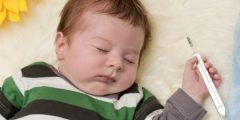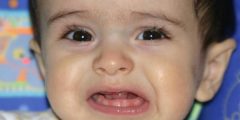Normal baby heartbeat
The normal heart rate varies according to age, and it is noted that the normal pulse rate in children or the child’s normal heartbeat is higher compared to adults and the elderly, and the normal rate of heartbeat in children per minute comes when measured at rest time (i.e. when the child is sitting quietly At bedtime according to different age groups:
| Age | Weight in kilograms | Normal pulse during sleep | Normal pulse while awake |
|---|---|---|---|
| 12-1 months | - | 160-75 | 170-100 |
| 2-1 years | 14-10 | 90-60 | 150-80 |
| 5-3 years | 18-14 | 90-60 | 130-70 |
| 12-6 years | 42-20 | 90-60 | 120-65 |
| 13-18 years | - | 90-50 | 90-55 |
High and low heartbeats in children
By monitoring the normal values of heart rate in children, they range over a fairly wide range and do not have a fixed value. In fact, the pulse rate may vary from time to time, and differ depending on the child’s activity. During movement, running, and playing, the heart rate is expected to rise, and with exercise. It may reach 220 beats per minute normally, while the pulse rate decreases during times of rest, relaxation, and sleep, and it may reach 60 beats per minute during sleep, and this is normal and does not cause concern, but in pathological cases the child’s pulse rate may rise significantly above Normal rates at rest, and at other times the pulse may decrease to less than 50 beats per minute. In both cases, whether it is very rapid or very low, it is considered an emergency, in which the child must be transported to the hospital or emergency room, especially if he shows symptoms of fainting. Or dizziness. Parents are also advised to consult a doctor if they notice that the child’s pulse rate remains at the upper limit of the normal rate even during times of sleep and lack of activity, or remains at the lower limit of the normal rate even during times of play and motor activity.
Read also:Characteristics of the mentally disabled
How to measure the heartbeat of children
To measure a child’s heart rate, the following steps must be followed:
- Conduct the measurement process in a quiet room away from noise, and that allows the child to sit or lie down comfortably.
- If the child was playing and exerting physical effort before the measurement, he should be left to rest for five minutes, until the heartbeat returns to normal.
- To measure the heart rate, you must use a watch or timer that shows seconds and minutes.
- The index and middle fingers are used to sense the pulse, and the thumb is avoided for this task, because it contains a pulsating artery itself.
- To sense the pulse, place the two fingers gently while avoiding pressure on the wrist area until the pulse is determined, then the pulses are counted for exactly one minute (60 seconds), or they are counted for 30 seconds and then the number resulting from the process of measuring it is doubled for 30 seconds to obtain the number of pulses per minute. One.
How to measure the heartbeat of infants
The best place to feel an infant's pulse is the brachial artery in the arm. The pulse or number of heartbeats for infants can be measured in this way by having the child lie on his back, then bend one of his arms upward, and then feel the pulse on the inner end of the arm, which is located between the shoulder and the elbow. (Elbow), and when the fetus’s pulse is felt, its heartbeats can be easily counted and calculated within one minute.
Read also:Treatment for colds in children
When should the pulse rate be measured in children?
In fact, there is no need to measure or follow the heart rate in healthy children. The doctor will do this task during routine visits to the child, but if the child suffers from an illness or health problem that requires measuring the child’s heart rate, the doctor will tell the parents how to measure the pulse, and how many times to measure it. The appropriate period for measurement, as required by the child’s condition.
Reasons that may lead to an increased heart rate in a child
Some people believe that a rapid heartbeat is an indicator of the presence of a problem or heart disease, and this is true, but it is not limited to that, as a rapid heartbeat may be a symptom associated with health problems or diseases other than heart disease, including:
Read also:Why does the child put his hand in his mouth?- The child’s consumption of drinks containing caffeine, such as coffee, soft drinks, and energy drinks.
- Rapid heartbeat may be caused by pain.
- An increase in body temperature is usually accompanied by an increase in heart rate.
- A common symptom of anemia is a rapid heartbeat.
- A rapid pulse is a common symptom of hyperthyroidism.
- A child taking some medications may cause an accelerated heartbeat, including: decongestants, as well as medications used to treat attention deficit hyperactivity disorder in children.









